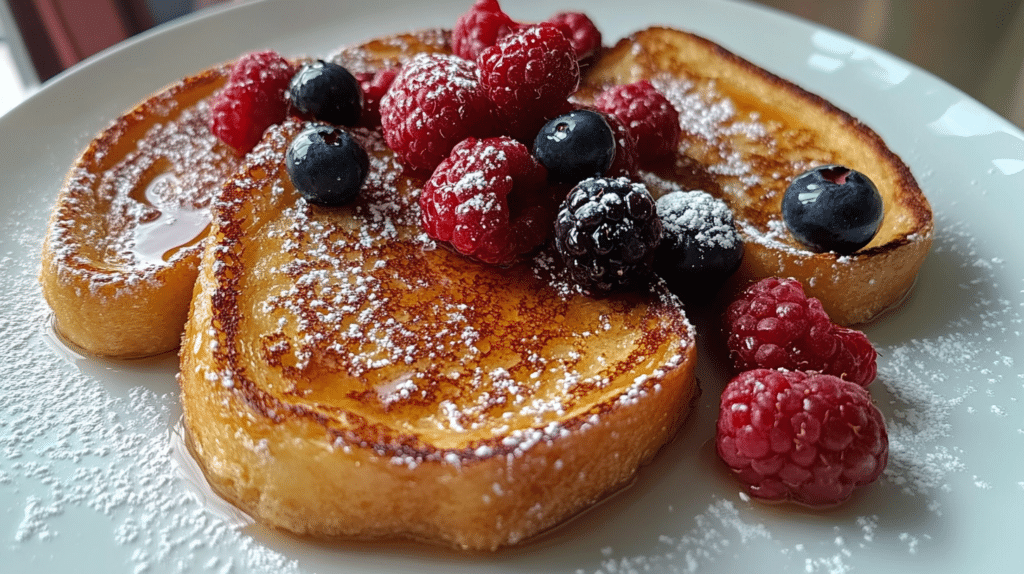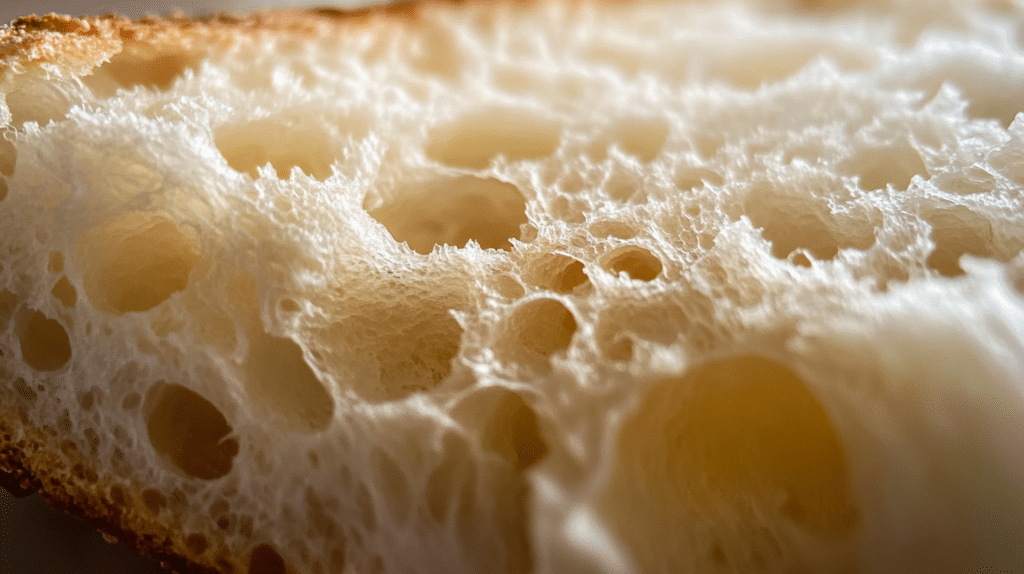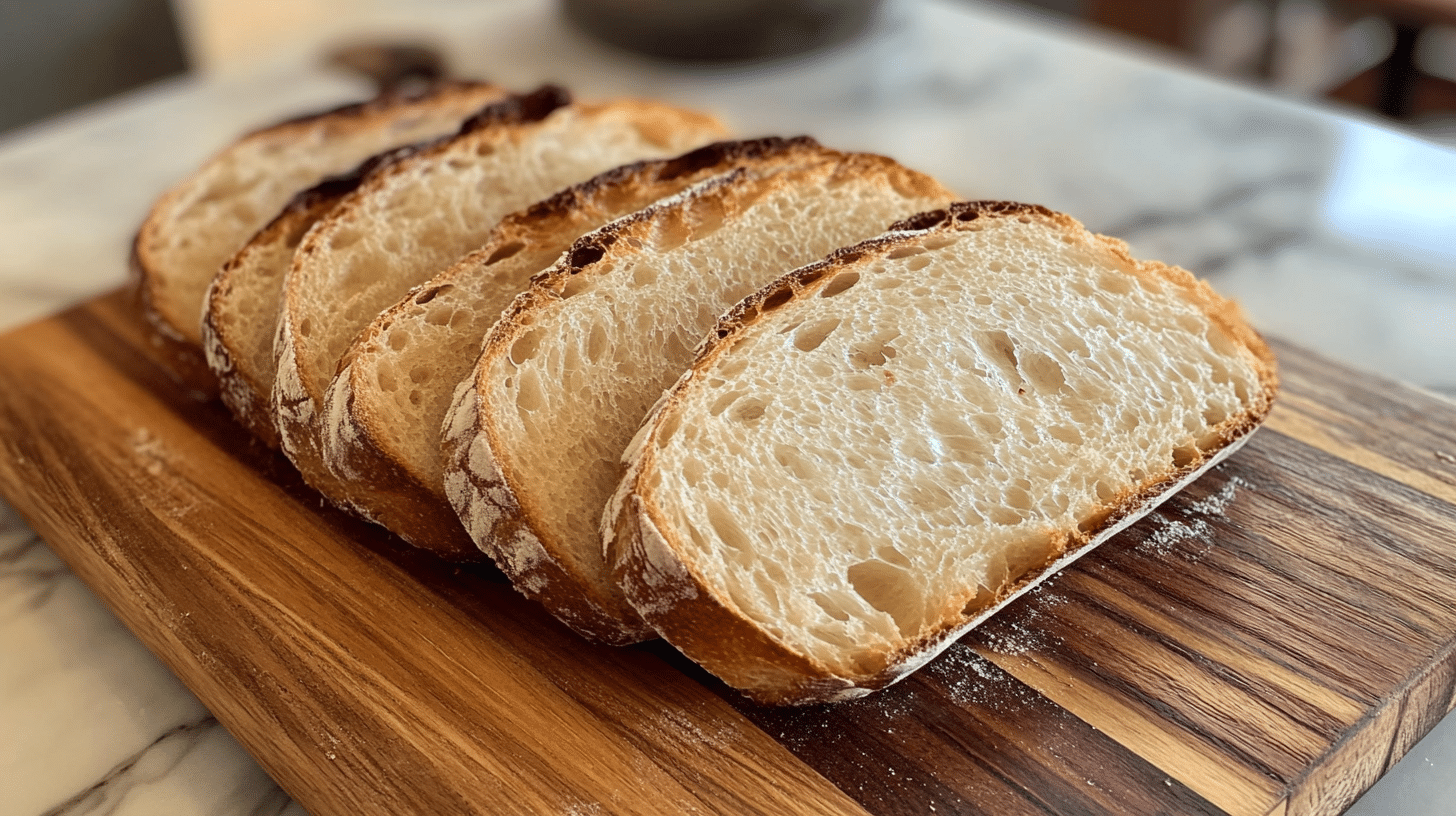Introduction
If you’ve ever wondered if sourdough bread for French toast is a good combination, you’re not alone. While classic French toast is typically made with soft, white bread or brioche, sourdough bread offers a unique twist with its tangy flavor and hearty texture. This alternative bread choice can elevate your French toast experience, adding a depth of flavor that’s both satisfying and unexpected. But does sourdough really work for French toast? Let’s explore how its distinct characteristics make it an excellent choice for this popular breakfast dish.
What Makes Sourdough Unique?
Sourdough bread is known for its distinct flavor, which sets it apart from many other types of bread. Unlike regular bread, which is typically made with yeast, sourdough is made through a natural fermentation process. This process involves wild yeast and lactic acid bacteria that help the dough rise and also give it that signature tangy taste.
Here’s a breakdown of what makes sourdough different:
- Tangy Flavor: The fermentation process gives sourdough its mildly sour taste. This is due to the production of lactic acid during the fermentation of the dough. This tang adds a layer of complexity that you won’t find in milder breads.
- Chewy Texture: Sourdough bread tends to have a denser and chewier texture compared to other soft bread varieties. This provides a satisfying bite and stands up well to soaking in egg batter.
- Thicker Crust: Sourdough is often known for its thick, crispy crust. This crust can add a delightful crunch to your French toast, providing a contrast to the soft, custardy interior.
When compared to other popular French toast bread choices, such as brioche or challah, sourdough’s tangy flavor and denser texture offer a unique twist on this breakfast classic.
How Sourdough Enhances French Toast
Sourdough is a bread that stands out from the crowd, thanks to its distinctive flavor, texture, and method of preparation. It’s a bread that’s been around for thousands of years, with origins tracing back to ancient civilizations. Its uniqueness comes from the natural fermentation process, which is what sets it apart from most other types of bread. Let’s take a deeper dive into what makes sourdough such a special bread, especially when used for French toast.
The Fermentation Process and Tangy Flavor
One of the defining characteristics of sourdough is the way it’s made. Unlike breads that use commercial yeast to rise, sourdough uses wild yeast and lactic acid bacteria (LAB), both of which are naturally present in the environment. These microorganisms are introduced to the dough when it’s mixed with water and flour, creating a starter culture that ferments the bread over time.
During the fermentation process, wild yeast consumes the sugars in the dough and produces carbon dioxide, which causes the bread to rise. At the same time, the lactic acid bacteria produce lactic acid, which gives sourdough its signature tangy flavor. This subtle acidity provides a depth of flavor that you won’t find in breads made with commercial yeast.
The tanginess of sourdough can vary based on factors like the length of fermentation, the flour used, and the conditions in which it’s made. Some sourdoughs have a milder tang, while others are much more pronounced. This complexity in flavor is one reason why sourdough makes such an interesting base for French toast. The tangy notes complement the sweetness of the custard and toppings, creating a perfect balance of flavors.

Texture: Dense, Chewy, and Hearty
Another reason sourdough is unique is its texture. Due to the natural fermentation process, sourdough bread tends to be denser and chewier than other types of bread. This can be both a challenge and an advantage when making French toast.
The dense crumb of sourdough means it can stand up to soaking in the custard mixture without falling apart. This is crucial for French toast, as you need the bread to absorb the egg mixture while retaining its structure. Sourdough’s chewy texture also provides a satisfying bite, which contrasts nicely with the soft, creamy interior that the custard creates.
Furthermore, sourdough typically has a thicker crust compared to other breads. The crust, when toasted, becomes golden brown and crunchy, which adds an appealing contrast in texture to the soft, custardy interior of the French toast. For those who love a bit of crunch in their French toast, sourdough’s crust is a great feature.

The Role of Gluten and Digestibility
Sourdough is often considered more digestible than other types of bread, especially for people who may have mild sensitivities to gluten. The fermentation process breaks down some of the gluten and phytic acid in the flour, making it easier to digest compared to breads made with commercial yeast. The longer the fermentation, the more these compounds are broken down.
Additionally, sourdough contains beneficial probiotics, which are created during the fermentation process. Although the baking process kills most of these probiotics, some of their beneficial effects remain. This makes sourdough a bread that not only tastes unique but also provides some digestive benefits.
Sourdough’s Versatility in Flavor Pairings
Because of its complex flavor profile, sourdough is incredibly versatile when it comes to flavor pairings. Its tanginess works well with a variety of toppings and accompaniments, both sweet and savory. When used in French toast, this versatility becomes a key feature.
Sourdough pairs exceptionally well with sweet toppings like maple syrup, honey, and powdered sugar, as its tang helps balance out the richness of the syrup. Additionally, it complements fruit-based toppings, such as fresh berries or caramelized bananas, by cutting through their sweetness with its own subtle acidity.
On the savory side, sourdough can also be paired with bacon, sausage, or eggs. Its tangy flavor can act as a perfect foil to the saltiness of the bacon or the richness of eggs, creating a balanced breakfast experience. This makes sourdough an excellent choice not just for French toast, but for any dish where bread is a key element.
The Art of Sourdough Baking
One of the aspects that makes sourdough so unique is the art and science behind its baking. Sourdough bread isn’t just about the ingredients; it’s about the technique. The starter culture, which is the foundation of the dough, needs to be carefully maintained and nurtured. It requires feeding with flour and water, and the environment in which it’s kept plays a significant role in its success.
Baking sourdough is also a slower process compared to other breads. While commercial yeast-based breads can rise quickly, sourdough requires a longer fermentation period, often taking anywhere from 12 to 48 hours. This slow fermentation process not only contributes to the bread’s unique flavor but also to its complexity in texture and aroma.
The process of creating a perfect sourdough loaf is a labor of love, and each baker’s sourdough can vary slightly in flavor and texture due to subtle differences in their methods. This sense of craftsmanship is part of what makes sourdough bread feel special and distinct.
Recipe Ideas for Sourdough French Toast
If you’re ready to try sourdough French toast, here’s a simple recipe along with some variations to elevate the dish:
Basic Sourdough French Toast Recipe:
Ingredients:
- 2 large eggs
- 1/2 cup milk or cream
- 1 tsp vanilla extract
- 1 tsp ground cinnamon (optional)
- Pinch of salt
- 4 slices of sourdough bread
- Butter for cooking
- Maple syrup for serving
Instructions:
- In a shallow bowl, whisk together eggs, milk, vanilla extract, cinnamon, and a pinch of salt.
- Heat a skillet or griddle over medium heat and melt a little butter.
- Dip each slice of sourdough into the egg mixture, ensuring both sides are well-coated.
- Cook the bread slices in the skillet for 2-3 minutes per side, or until golden brown and crispy.
- Serve with maple syrup and your favorite toppings (berries, powdered sugar, whipped cream, etc.).
Variations to Try:
- Berry Compote: Top your sourdough French toast with a warm berry compote or fresh strawberries for a sweet and tangy addition.
- Cinnamon-Sugar Topping: Sprinkle cinnamon sugar over the hot French toast for an extra burst of flavor.
- Savory Twist: For a savory breakfast, skip the sugar and top with scrambled eggs, bacon, or cheese.
Pairing Sourdough French Toast
The unique flavor of sourdough French toast pairs well with various accompaniments. Here are some ideas to complete your breakfast:
- Bacon or Sausages: The salty and savory taste of bacon or sausages balances the tangy and sweet flavors of sourdough French toast.
- Fresh Fruit: Fresh berries, bananas, or peaches provide a refreshing contrast to the richness of French toast.
- Coffee or Tea: A strong cup of coffee or a refreshing iced tea pairs beautifully with sourdough French toast, making for a well-rounded breakfast experience.
Health Benefits of Using Sourdough
While French toast is often considered a treat, using sourdough bread can add some nutritional benefits:
- Lower Glycemic Index: Sourdough bread has a lower glycemic index compared to white bread. This means it causes a slower, steadier rise in blood sugar levels, making it a better option for those watching their blood sugar.
- Digestibility: The fermentation process in sourdough breaks down gluten and phytic acid, which can make the bread easier to digest compared to regular bread. This can be especially beneficial for people with mild gluten sensitivity.
- Probiotics: Although most of the probiotics in sourdough are destroyed during baking, the fermentation process still provides some health benefits by supporting gut health.
These benefits make sourdough a slightly healthier choice for your French toast, especially if you’re looking for a more nutritious option.
Challenges of Using Sourdough for French Toast
While sourdough offers many advantages, there are a few challenges to consider when using it for French toast:
- Balancing the Tang: Sourdough’s tangy flavor can sometimes be overpowering when paired with sweet toppings. It’s important to balance this by adjusting the amount of sugar or syrup you use or by adding fruit to complement the bread’s flavor.
- Crusty Texture: While the thick crust of sourdough adds texture, it can also make the French toast slightly chewier than you might prefer. If you find the crust too tough, you can try using slightly thinner slices or allowing the bread to soak a little longer.
- Bread Thickness: Sourdough is often sold in thick slices, which can lead to a heartier French toast. While this is great for texture, it might not be ideal for everyone. You can opt for thinner slices if you prefer a lighter version.
FAQs
1. Can I use sourdough that is a few days old for French toast?
Yes! In fact, slightly stale sourdough is ideal for French toast. It soaks up the custard mixture better without falling apart.
2. Is sourdough French toast healthier than regular French toast?
Sourdough can be a healthier option due to its lower glycemic index and easier digestibility. However, the overall healthiness depends on your toppings and ingredients.
3. How do I prevent sourdough French toast from getting soggy?
Make sure to use thick slices of sourdough, and don’t soak the bread for too long. A quick dip in the custard mixture should be enough.
4. Can I make sourdough French toast ahead of time?
Yes, you can prepare the custard mixture ahead of time and refrigerate it. However, French toast is best served immediately after cooking for the best texture.
5. Can I make sourdough French toast without eggs?
Yes! You can use a plant-based egg substitute, such as flax eggs or silken tofu, for a vegan version of sourdough French toast.
6. What’s the best sourdough bread for French toast?
A rustic, artisanal sourdough with a thick, chewy texture and a tangy flavor works best for French toast. Avoid overly soft or commercial varieties.

Conclusion
Sourdough is more than just a trendy bread; it’s an excellent choice for French toast. Its tangy flavor, chewy texture, and the ability to hold up well when soaked make it a delicious and unique alternative to traditional French toast bread. Whether you’re looking to try something new or you’re simply curious about how sourdough can elevate your breakfast, it’s worth experimenting with this bread. For more details, check out Sourdough French Toast Recipe: The Ultimate Guide.
So, next time you make French toast, give sourdough a chance—you might just be surprised at how well it works with this classic dish. If you’re also interested in exploring different French toast varieties, see our comparison of Texas French Toast vs. French Toast: What’s the Difference?. And if you’ve ever wondered, Does Sourdough Bread Make Good Toast? will give you more reasons to love this bread.

